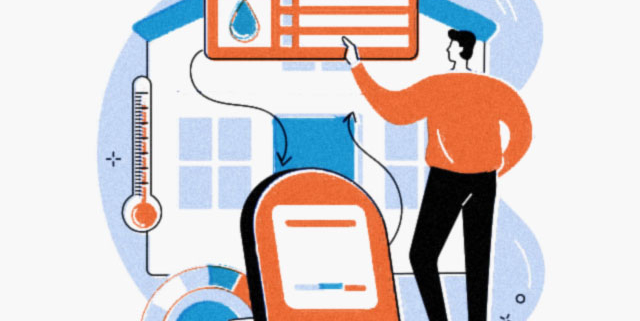How to improve indoor ventilation and air quality
When we breathe, we might release infectious particles into the air. These particles build up faster in small indoor spaces and surfaces. Indoor air quality is more important than ever.
Natural and mechanical ventilation helps to reduce levels of infectious particles indoors. They do this by replacing indoor air with outdoor air. A well ventilated room doesn’t feel stuffy or smelly. In our lives indoor air quality has never been that important.
Combined with individual public health measures, good indoor ventilation and adequate air filtration helps prevent the spread of diseases and air pollution.
Mechanical ventilation
Many buildings use a central heating, ventilation, and air conditioning system (HVAC) for mechanical ventilation.
If your indoor space has vents in the ceiling, walls, or floor, then it most likely has a conventional ducted HVAC system installed.
Consult your HVAC professional to make sure the system is appropriate for the type of setting, activity, and the number of occupants. Also take into consideration the length of time people will occupy the space. Consider improvements to increase outdoor air exchange rates and filtration efficiency. For example, use the highest efficiency particulate filter (ideally MERV 13 filter rating or higher) that the system can handle.
Do routine maintenance, such as keep vents and fans clear change the filter as recommended by the manufacturer.
If possible, run the HVAC system fan nonstop day and night to bring in fresh air. This will increase the delivery of clean air and reduce the number of infectious particles and pollutants in the indoor air.
How to improve ventilation and indoor air quality in specific environments
In addition to the general recommendations to improve indoor air quality mentioned above, other measures can improve ventilation in specific settings. Think about homes, long-term care facilities and health care providers, schools, offices, and religious institutions.
Most homes use natural or mechanical (HVAC system) ventilation to get rid of airborne contaminants and should follow the recommendations listed above. You may also consider the following measures, particularly when visitors are present. To further improve the indoor air quality, an air purifier not only removes pollutants but can eliminate unpleasant odours.
If your home has a heat recovery ventilator (HRV) or energy recovery ventilator (ERV system), run it regularly. If your kitchen or bathroom has exhaust fans venting indoor pollution to the outside, run them at low speed. Open windows and doors frequently. This will help remove polluted air without creating significant pressure changes.




Leave a Reply
Want to join the discussion?Feel free to contribute!